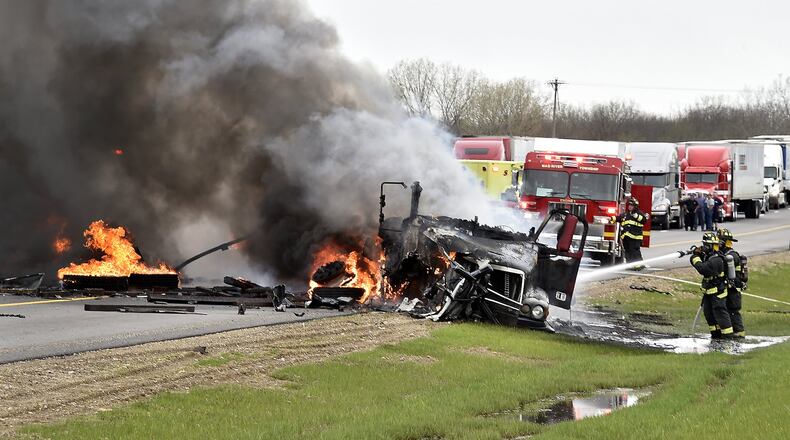August had 150 more fatalities in the past five years than the 413 recorded for December. But during that same time period, August saw 115,440 accidents — more than 20,000 less than the total for December.
RELATED: Tax-free holiday on school supplies begins this week
Even though more crashes happen during the winter, that doesn’t necessarily correlate with traffic deaths, said Sgt. Chris Colbert with the Dayton post of the Ohio State Highway Patrol, who has been serving in his role for more than 28 years. The higher summer fatality rate is a result of several contributing factors, he added
“Bad weather tends to produce a lot of crashes, but it also produces crashes at lower speeds,” Colbert said.
The biggest factor in whether an accident is going to result in a fatality is basically a math equation, he said. It involves how much energy is involved in the crash, which is determined by speed and road condition.
“With wet pavement and lower speeds you have less energy in the crashes, so you have a much better chance of survival,” Colbert said. “When you’re on dry pavement, there’s a lot more energy transferred to the vehicle than on wet pavement.”
When the roads are wet or slippery, cars will dissipate energy post-collision as they slide. But on dry pavement, the energy is kept within the vehicles.
»RELATED: Here’s how you can get free guacamole at Chipotle
“The most common cause of a crash is following too close. The most common cause of death is driving too fast,” said Sharon Fife, president of D&D Driving School.
The driver’s test is too easy, Fife said, adding that most of the 16-year-old students in her classes could pass the exam after two weeks. Even if drivers follow the rules, they’re still not safe, Fife said.
“With new drivers, they think if they do everything right they’ll be okay but that’s not true,” Fife said. “You’ve got to watch out for the other guy. We really work on visual skills.”
BIZ BEAT: We tried grocery delivery service: 5 things we found out
Nationwide, a Columbus-based insurance company, said its customers across the nation reported more accidents in August 2016 than any other month over the last four years. Nationwide tracks driving habits through the SmartRide program, which found that some factors leading up to accidents are hard breaking, fast acceleration and time spent in congested traffic.
The company found the most aggressive time to drive is Friday between 9 a.m. and 4 p.m., a time frame where bad driving habits related to accidents increase most.
Other smaller contributing factors could include that there’s a gap between the Fourth of July and Labor Day, so people may be traveling for vacation, going to the lake or doing other summer activities where alcohol is involved, Colbert said.
“I think there’s a certain percentage of people who drink and drive year round. I think they’re just on the road more in the summer,” he said.
But there are ways to potentially prevent death in the chance of an accident, Colbert said. Of all the Ohio traffic fatalities in 2017, more than 40 percent of victims were not wearing seat belts.
“You can make any argument that you want, but the undisputed fact is wearing your seat belt is probably one of the best ways to keep yourself alive in the event of a crash,” Colbert said.
RELATED: Louis Vuitton to open first Southwest Ohio store
Air bags and other safety mechanisms in cars work better if passengers are wearing their seat belts. The energy transmitted to someone within the vehicle who is not wearing a seatbelt is far different than that of someone wearing one, he said.
“If you’re bouncing around inside the car, you’re taking it. Where if you’re a part of the car, the entire car is taking it and you’re just a piece of it,” he said. “You don’t want be separated. The car is designed to withstand the impact; your body is not.”
FIVE FAST READS
• Back-to-school sales starting early as first day approaches
• New doughnut shop, gym coming to Beavercreek
• Opening date set for new discount grocery store in Kettering
About the Author
